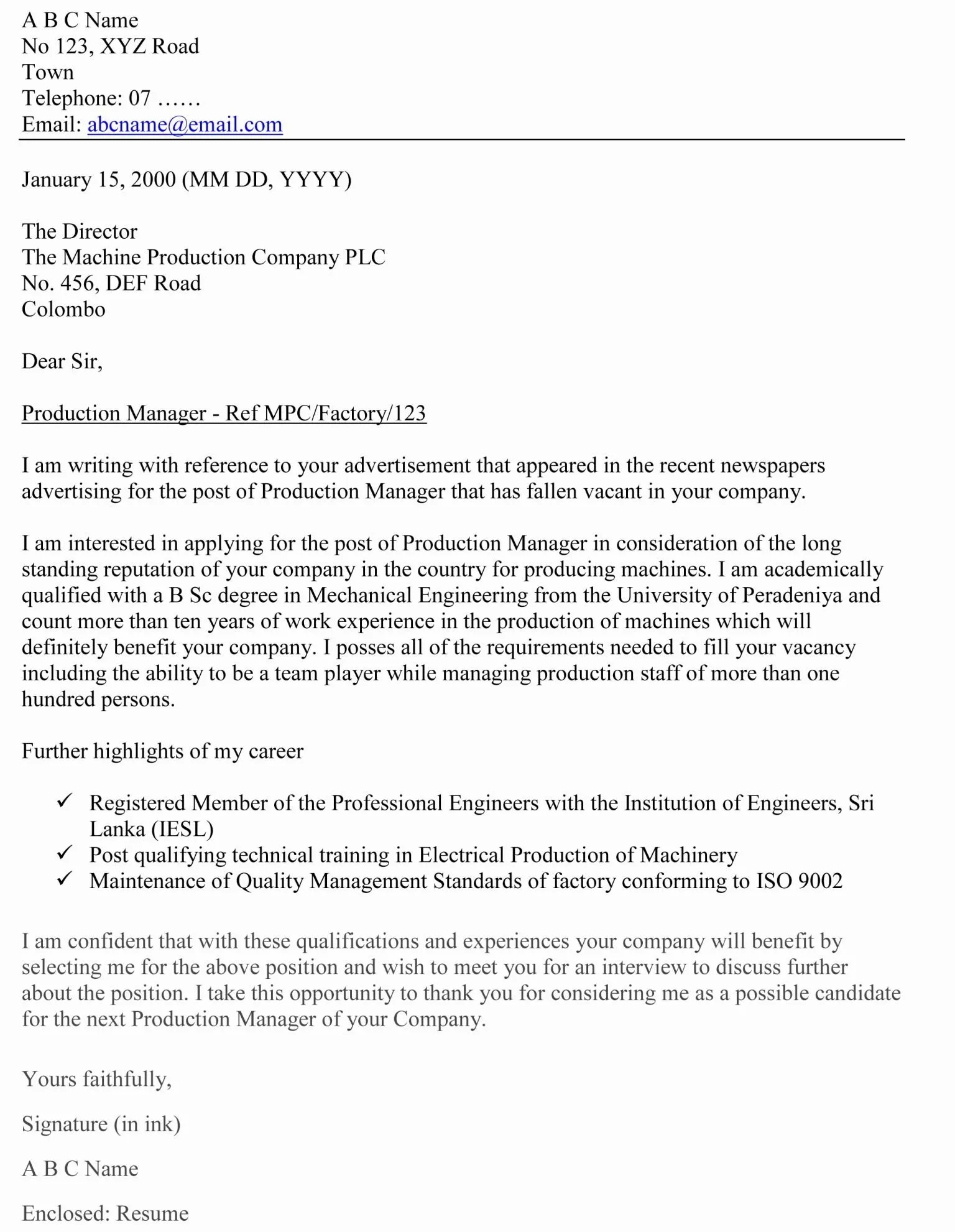Understand the Purpose of a Technical Writer Cover Letter
A cover letter for a technical writer serves as your introduction to a potential employer, going beyond the information presented in your resume. It’s your opportunity to showcase your personality, writing style, and enthusiasm for the role. The primary purpose is to persuade the hiring manager that you possess the necessary skills, experience, and cultural fit to excel as a technical writer within their organization. It complements your resume by providing context and detailing how your qualifications align with the specific requirements of the job. A well-crafted cover letter can significantly increase your chances of securing an interview, as it demonstrates your ability to communicate effectively and tailor your message to a specific audience, which is a core competency for any technical writer. Remember that it is your first and maybe the only chance to make a good first impression.
Highlight Relevant Skills and Experience
Your cover letter should prominently feature the skills and experience most relevant to the technical writer position. Focus on the key requirements outlined in the job description, using this as your roadmap. This section is where you connect your past work to their needs. Detail your accomplishments by describing your roles in previous projects and the outcome of your work. Provide clear evidence that you possess the key skills, such as technical documentation, API documentation, user manuals, and experience in tools like MadCap Flare, Adobe FrameMaker, or similar. Emphasize the use of clear, concise language and your ability to explain complex information in a way that is easy to understand. Back up your claims with concrete examples and provide a snapshot of your expertise in the form of a brief description of your expertise.
Technical Writing Skills
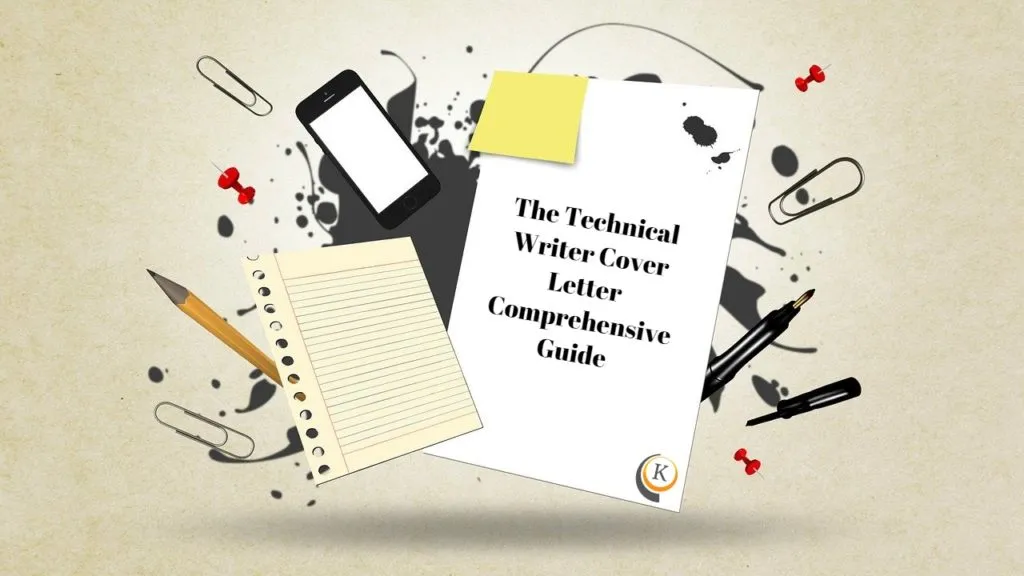
Showcase your technical writing skills by mentioning specific writing abilities. These might include proficiency in writing clear and concise documentation, experience with various documentation types (user guides, API documentation, online help systems), and an understanding of information architecture principles. Highlight your ability to adapt your writing style to suit different audiences and technical levels. Mention any experience with structured authoring, single-source publishing, and content management systems. Furthermore, mention your process to explain complex information. For example, you are able to break down complex processes, understand how to simplify and clarify complex information, and use appropriate formatting and visuals to enhance readability. In addition, explain your method to work effectively with subject matter experts.
Experience in Technical Documentation
Detail your experience in technical documentation, emphasizing the types of documents you have created. This could include user manuals, online help systems, API documentation, installation guides, and training materials. Mention your familiarity with the documentation development lifecycle, from planning and research to writing, editing, and publishing. Provide examples of projects where you have successfully created and delivered technical documentation. Highlight any experience with industry-standard documentation tools and technologies. Describe the outcome of your past work and how you helped your clients. In addition to creating documentation, explain your experience in managing documentation projects. This can include managing timelines, coordinating with subject matter experts, and ensuring quality and accuracy.
Showcase Achievements and Quantifiable Results
Use your cover letter to demonstrate the value you can bring to the company by showcasing your achievements and quantifiable results. Avoid simply listing your job responsibilities. Instead, focus on the impact of your work. Use metrics to illustrate your success whenever possible. For example, instead of saying you wrote user manuals, you could say you ‘Reduced customer support inquiries by 15% through the creation of clear and comprehensive user manuals.’ This approach demonstrates your ability to produce effective documentation that solves real-world problems. The best approach is to use the STAR method – Situation, Task, Action, Result – to frame your achievements. This helps you provide context, detail the actions you took, and highlight the positive outcomes of your work. By focusing on accomplishments and using measurable results, you can make a strong case for your qualifications and make your cover letter stand out.
Quantify Your Accomplishments

Quantifying your accomplishments is crucial to demonstrate your value to a potential employer. Instead of stating general achievements, provide specific, measurable results. For instance, if you improved documentation efficiency, state the percentage or amount of time saved. If you contributed to a reduction in customer support calls, specify the percentage decrease. If you streamlined a documentation process, mention the number of steps you eliminated or the time you saved. For example, you may have ‘Reduced time-to-market for product documentation by 20% through the implementation of a new content management system.’ Or, you may have ‘Increased user satisfaction with online documentation by 25% based on customer feedback.’ Whenever possible, back up your claims with data and provide the source or method of measurement. The more specific you are, the more credible your accomplishments will appear, making your cover letter much more impactful.
Provide Specific Examples
Supplement your claims with specific examples of your work. Provide brief, focused stories that illustrate your skills and experience. For example, if you claim to have experience with API documentation, provide a short description of a project where you documented an API, the challenges you faced, and how you resolved them. If you state that you’re proficient in a certain documentation tool, mention a specific project where you used it and the results you achieved. Use the STAR method to structure your examples: Describe the Situation, the Task you were assigned, the Action you took, and the Result you achieved. These examples should demonstrate how you’ve used your skills in practical situations and the positive impact your work has had. Ensure that the examples directly relate to the requirements listed in the job description, demonstrating your understanding of the role and your ability to meet its demands. By providing concrete examples, you prove your claims and make your cover letter more compelling.
Tailor the Cover Letter to the Job Description
The most effective cover letters are not generic; they are tailored to each specific job application. Carefully review the job description and identify the key skills, experiences, and requirements. Then, customize your cover letter to address these points directly. Explain how your skills and experience align with the specific needs of the role and the company. Show that you have researched the company and understand its mission, values, and the type of products or services it offers. Mention specific projects or tasks that demonstrate your understanding of the company’s needs. Demonstrate that you understand their requirements and explain how you can contribute. Use the same keywords and phrases from the job description to ensure your application gets through applicant tracking systems (ATS). The most important thing is to write a cover letter that is specifically written for the company. You can showcase that you’ve invested time and effort in understanding their needs. This personalized approach is key to getting noticed by the hiring manager and demonstrating your genuine interest in the position.
Keywords from Job Description
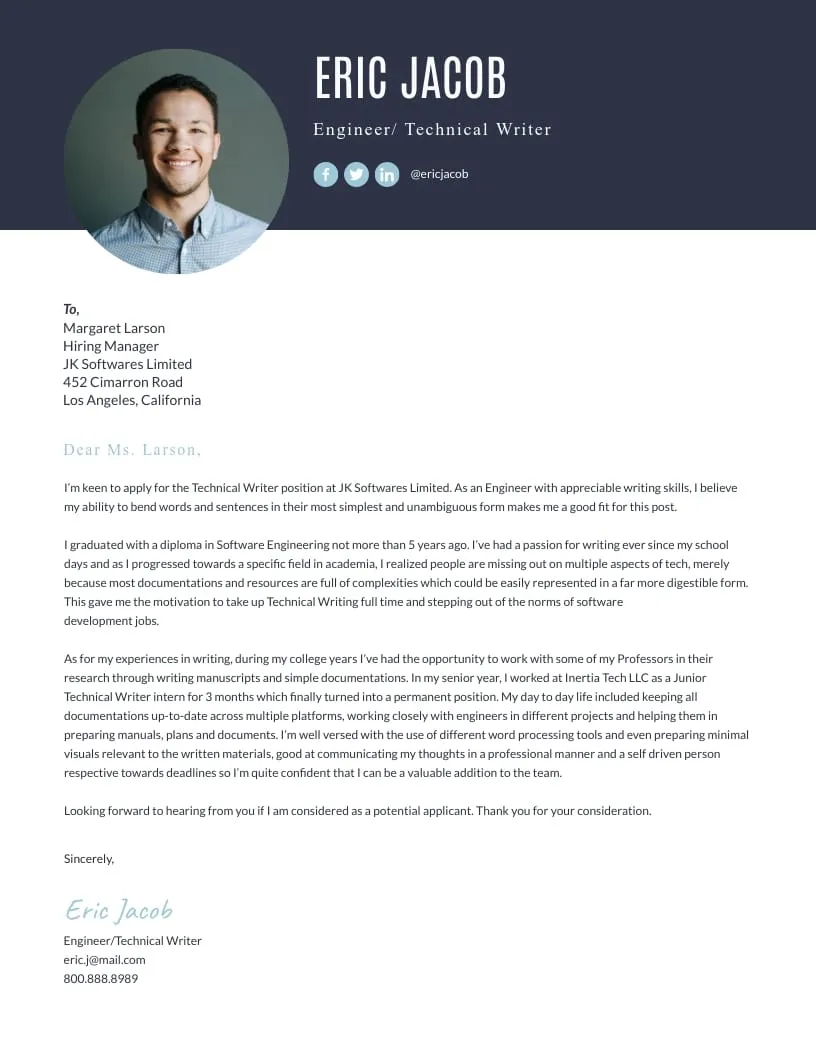
A critical aspect of tailoring your cover letter is incorporating keywords from the job description. Applicant Tracking Systems (ATS) often scan applications for these keywords to determine if a candidate meets the basic requirements. Read the job description carefully, identify the key skills, technologies, and qualifications, and integrate them naturally into your cover letter. When describing your skills and experience, use the same terminology as the job description. For example, if the job description mentions ’experience with MadCap Flare,’ make sure to include that phrase in your cover letter when discussing your technical writing tool proficiency. Similarly, if the job description emphasizes ‘strong communication skills,’ explicitly state that you possess these skills and provide examples of how you’ve demonstrated them in previous roles. However, avoid simply stuffing keywords into your cover letter. Instead, weave them into the context of your experience, making sure your writing flows smoothly and that the keywords are relevant to your specific skills and achievements.
Company Research
Before you start writing your cover letter, invest time in researching the company. Understanding the company’s mission, values, and recent projects will help you tailor your letter to their specific needs. Visit their website, read their blog, and review their social media profiles to gain a deeper understanding of their work culture and products. Mentioning specific company projects or products in your cover letter demonstrates your genuine interest and shows that you’ve taken the time to learn about the organization. Tailor your cover letter to match the company’s tone and style. If the company has a more casual or informal approach, your cover letter can reflect that. If it’s more formal, maintain a professional tone. Aligning your cover letter with the company’s brand and culture increases your chances of making a strong first impression. Incorporate your knowledge of the company into your letter by highlighting how your skills and experience can contribute to their goals. For example, explain how your documentation expertise can support their product launches or improve customer satisfaction.
Formatting and Structure
The formatting and structure of your cover letter are just as important as the content. A well-formatted cover letter is easy to read and makes a positive first impression. Use a professional and readable font, such as Arial, Calibri, or Times New Roman, and a font size of 11 or 12 points. Use consistent formatting throughout the document, including clear headings, bullet points, and consistent spacing. Break up large blocks of text into shorter paragraphs to improve readability. Include the date, your contact information, the hiring manager’s name (if known), and the company’s address at the top of the letter. Ensure the layout is clean and uncluttered. You can use a template as a starting point, but always customize it to reflect your own brand and the specific requirements of the job. A visually appealing cover letter shows your attention to detail and your commitment to presenting yourself in a professional manner. Ensure that your cover letter is easy on the eyes, and avoid any layout elements that may distract the reader.
Cover Letter Length
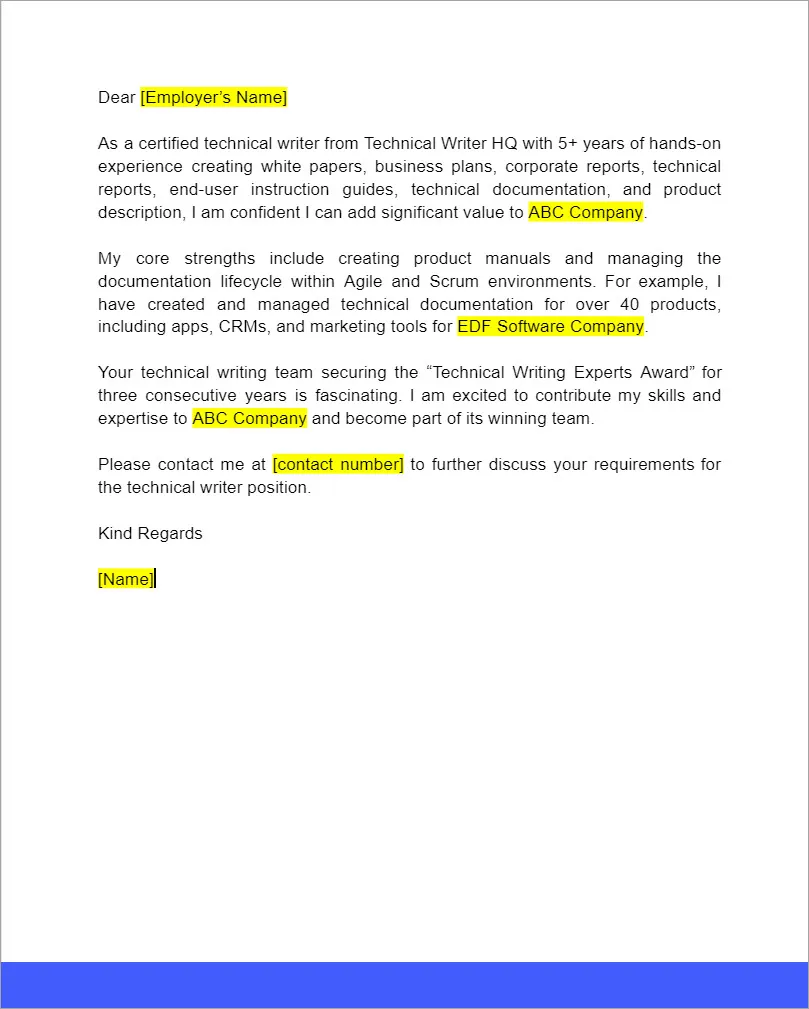
Keep your cover letter concise and to the point. Ideally, your cover letter should be no more than one page long. Hiring managers are busy and often have many applications to review, so brevity is key. Focus on the most relevant skills, experiences, and achievements. Avoid unnecessary details or lengthy explanations. Each sentence should have a purpose, and every paragraph should contribute to your overall message. Use clear and concise language to express your ideas. Avoid jargon and complex sentence structures. Ensure that every word adds value to your application. You have limited space, so make every word count. Condense your key selling points into a compelling narrative, emphasizing your qualifications and how you can contribute to the company. A well-written, concise cover letter will make a stronger impression than a lengthy, unfocused one.
Use a Professional Tone
Maintain a professional tone throughout your cover letter. This means using formal language, avoiding slang, and keeping a respectful and courteous approach. Use proper grammar and spelling, and proofread carefully to avoid any errors. Address the hiring manager by name, if possible. If you can’t find a name, use a professional greeting such as ‘Dear Hiring Manager.’ Always use a polite and respectful closing, such as ‘Sincerely’ or ‘Best regards.’ Project confidence, but avoid being arrogant or overconfident. Focus on what you can do for the company, rather than what the company can do for you. Show your enthusiasm for the role and the company, but remain professional and composed. Your cover letter is a formal document, so your tone should reflect this. A well-written, professional cover letter demonstrates your communication skills and attention to detail, which are essential qualities for a technical writer. Avoid any unprofessional language and keep it professional, with an enthusiastic but respectful attitude.
Proofread Carefully
Proofreading is a critical step in the cover letter writing process. Errors in grammar, spelling, and punctuation can undermine your credibility and make a negative impression on the hiring manager. After you finish writing your cover letter, read it carefully multiple times, checking for any mistakes. Then, let it sit for a while, and review it again with fresh eyes. Proofread the document in a different setting or on a different device. Consider having a friend, family member, or career advisor review your cover letter to catch any errors you may have missed. Use spell check and grammar check tools, but don’t rely on them completely, as they may not catch all errors. Always read through your cover letter carefully, even after running it through these tools. Ensure that all the information is accurate and that the formatting is consistent. Proofreading is an essential part of the writing process, so take your time and ensure that your cover letter is polished and error-free. A well-proofread cover letter demonstrates your attention to detail and professionalism, showing that you are serious about the job and the company.
Call to Action and Closing
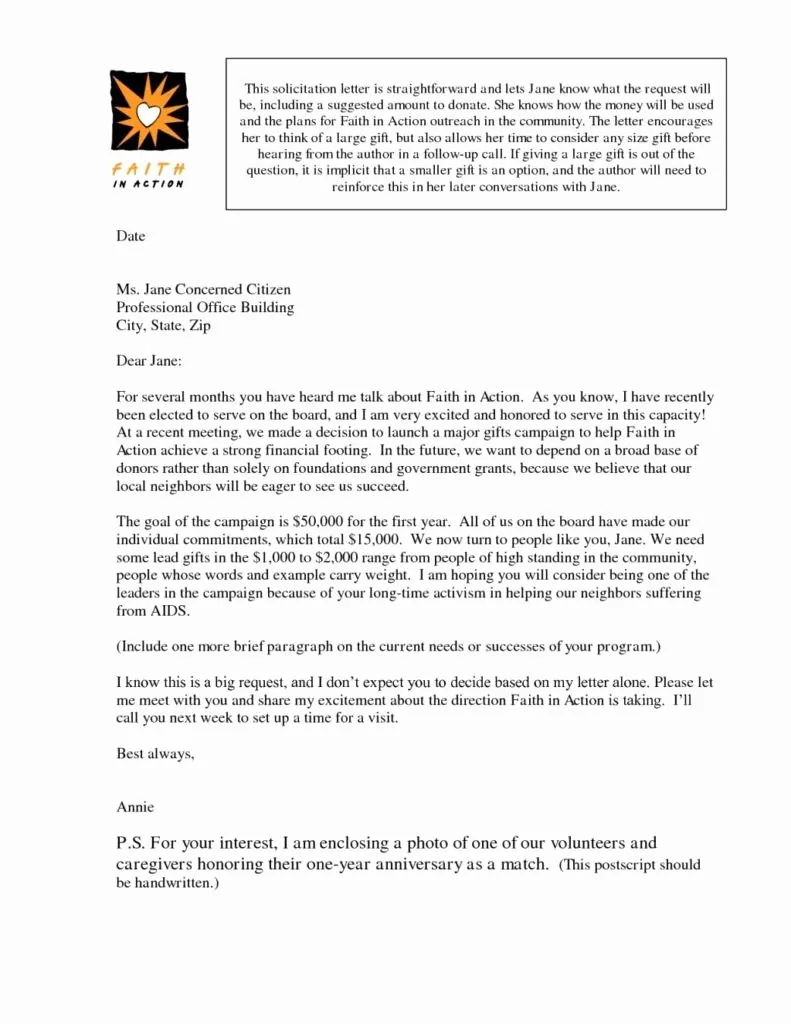
Your cover letter should end with a clear call to action and a professional closing. State your interest in the position and express your enthusiasm for the opportunity. In the call to action, specify how you would like the hiring manager to proceed. For example, you can say, ‘I am eager to learn more about this opportunity and discuss how my skills and experience can benefit your team. I am available for an interview at your earliest convenience.’ Include your contact information, such as your phone number and email address. Thank the hiring manager for their time and consideration. Use a professional closing such as ‘Sincerely,’ ‘Best regards,’ or ‘Thank you.’ The closing is your final chance to leave a positive impression, so make it count. Ensure that it reflects your enthusiasm and professionalism. The goal is to express your interest, make it easy for the hiring manager to contact you, and reinforce your qualifications for the role.
